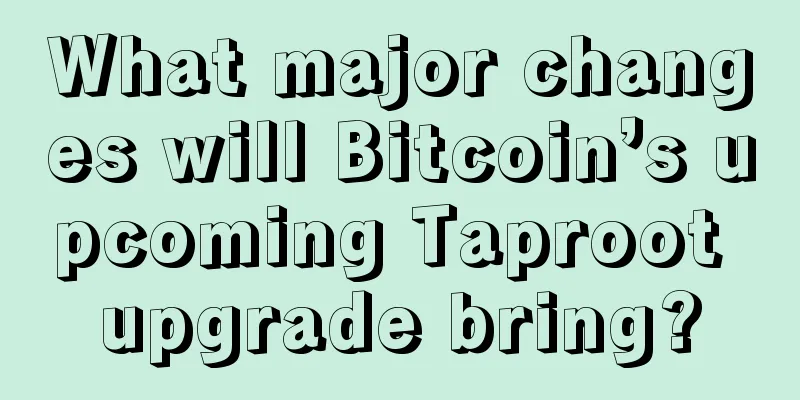Everything You Need to Know About Ethereum’s Pectra Upgrade

|
Editor's note: This article introduces the Pectra upgrade, which is a major improvement to Ethereum, divided into three main areas: improving Ethereum accounts, improving the validator experience, and expanding data blocks. The article details multiple EIPs (Ethereum Improvement Proposals), including EIP-7702, EIP-7251, etc., to improve account functions, reduce the complexity of validator operations, and improve network efficiency. In addition, it also explores how to expand the network by increasing the data block capacity, and gradually achieve the goal of stateless clients, and promote the security and scalability of the Ethereum network. The following is the original content (for easier reading and understanding, the original content has been reorganized): Ethereum is improving account functionality, simplifying network verification, and making data blocks more efficient. This article will introduce Pectra, a highly anticipated upgrade that brings many new Ethereum Improvement Proposals (EIPs), and the first phase is now live. Available on Holesky on February 24 Available on Sepolia on March 5 Once the implementation is successful, the mainnet update date will be determined. We can expect the mainnet update to take place between 3 and 9 months after the testnet implementation. Pectra is a fairly significant upgrade that brings improvements to multiple EIPs: We can group these improvements into three key areas: Improved Ethereum accounts Improved user experience for Ethereum validators Ability to extend data blocks Let’s take a deeper look at some of the upcoming EIPs and how they can improve the Ethereum protocol and the experience for users. Improving Ethereum Accounts: EIP-7702EIP-7702 advances Ethereum’s protocol layer to account abstraction. It expands Ethereum’s externally owned account (EOA) functionality and adds smart contract functionality, including: Transaction batching: performing multiple operations in one transaction Gas Sponsorship: Allows accounts without ETH to have transaction fees paid by others More authentication and recovery mechanisms Improving the user experience of Ethereum validators: EIP-7251/7002/6110· EIP-7251: Increases the maximum balance of validators to 2048 ETH and allows them to automatically compound rewards on larger active stakes. Previously, rewards only considered balances of 32 ETH. In addition, larger validators can now merge multiple 32 ETH validators into one. ️ EIP-7002: Reduces trust assumptions by allowing execution layer addresses to trigger withdrawals (as long as it is set as a “withdrawable credential”). Previously, only validators could trigger withdrawals. EIP-6110: Removes the 2048 block delay between validator deposits and when they are added to the queue. This is expected to be reduced from 9 hours to 13 minutes. Extension Blocks: EIP-7691As the cost of data blocks increases, the need to expand data blocks also arises. With EIP-7691, the capacity of data blocks will increase by 50%: Currently, each Ethereum block can accommodate approximately 3 data blocks (up to 6 during peak demand). After the implementation of EIP-7691, it will support an average of 6 data blocks, and up to 9 during high demand. The next step to further scale blockchain is to reduce the need to store all blockchains and move to subnets, which can still be used to verify blockchain data. Other EIPs in Pectra include:EIP-2537: Increase the number of secure bits of operations to more than 120 bits, currently more than 80 bits. ·EIP-2935: Preparing for stateless clients, this EIP proposes to store historical block hashes in the state as part of the block processing logic. Implemented through contract storage, the EIP allows for a smooth transition without affecting the block hash logic. Rollups will be able to benefit from a longer history and query the storage contract directly. ·EIP-7549: This AIP focuses on improving the efficiency of Casper clients. This is achieved by reducing the number of pairings required to verify consensus, specifically removing one of the three elements in the Casper client certification message: the committee index. By moving it out of the certification message, votes to reach consensus can now be aggregated into blocks more efficiently, increasing the number of votes per block from 2 slots to 8. ·EIP-7623: One of the most impactful developments on L2 is the EIP-7623 proposal to increase calldata costs. The proposal aims to adjust the calldata cost to account for the difference between the average (100KB) and maximum block size (7.15MB). This will not affect ordinary users, only transactions that are primarily used to publish data. This increase will be introduced via a base fee that depends on the ratio of gas consumed on invoking data operations: reducing the block size to accommodate more data blocks, or increasing the gas limit. EIP-7685: Introduces a framework to store requests triggered by smart contracts. This allows validators controlled by smart contracts to delegate management operations to the latter, reducing the need for intermediaries. ·EIP-2935: Preparing for stateless clients, this EIP proposes to store historical block hashes in the state as part of the block processing logic. Implemented through contract storage, the EIP allows for a smooth transition without affecting the block hash logic. Rollups will be able to benefit from a longer history and query the storage contract directly. The focus of this upgrade is an important signal for Ethereum; we know these improvements were in the works long ago and are not a response to recent criticism. However, the focus on streamlining network security, improving Ethereum account functionality, and the ability to extend data blocks is one of the key developments that Ethereum needs to achieve. |
<<: Has Bitcoin fallen below 80,000?
>>: Where is the bottom of BTC in this cycle?
Recommend
What kind of man is blessed according to his face?
What kind of man is blessed according to his face...
What does a mole on the bridge of the nose mean?
A mole on the nose represents a person's fort...
How to read a woman’s palm? Palmistry of women
Everyone is special, and everyone's palm line...
Men with moles on their buttocks have lofty ideals and can achieve great things!
Is it good for a man to have a mole on his butt? ...
How is this crypto bull run different from the previous cycle?
I’m at the Denver Ethereum Conference right now. ...
What are the facial features of a "king" woman?
What are the facial features of a "king"...
Is it good to have a mole between the eyes? Where are the best places to have a mole?
The part of the nose bridge between people's ...
Palmistry for No Worries about Food and Clothing
Palmistry for No Worries about Food and Clothing ...
How can the value network blockchain disrupt urban life by removing intermediaries?
Many upcoming trends can provide new opportunitie...
What to do if the life line in palmistry is too short and broken
What to do if the life line in palmistry is too s...
Women without a lifeline in their palms may be on the verge of death
Is it good for a woman to not have a lifeline on ...
The triangular console is about to land in the Korean market
Breaking news: On March 16, 2018, Korean time, th...
Is it a good fortune for a man with hairy ears? What kind of ears are a symbol of good fortune?
Observe a person's appearance and fate. Hello...
Bitcoin entanglement August 22, 2016: The consolidation is taking shape & 7 thoughts
It has been 20 days since the plunge on August 2....
The face of a man who does great things
The face of a man who does great things Three con...









